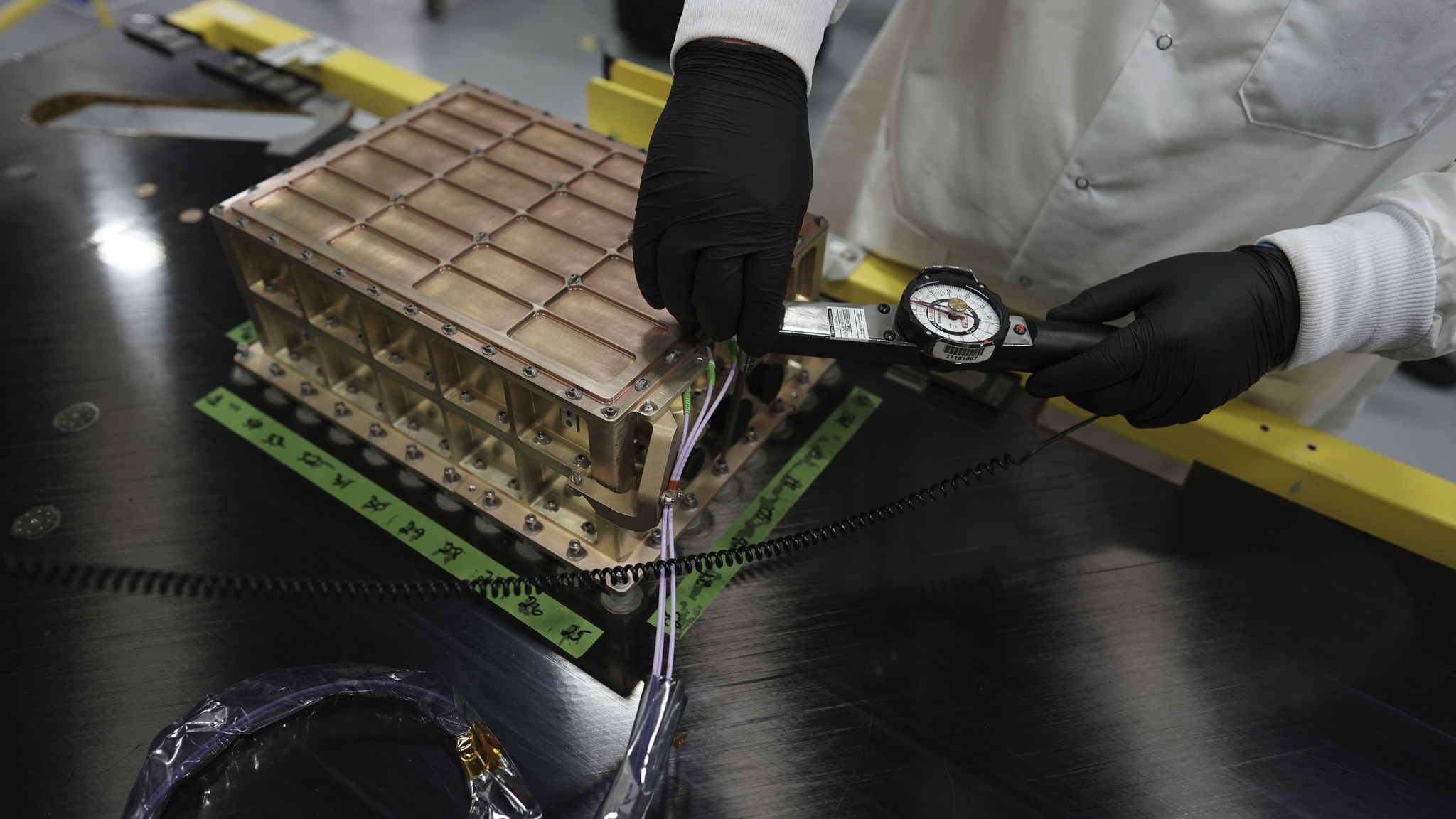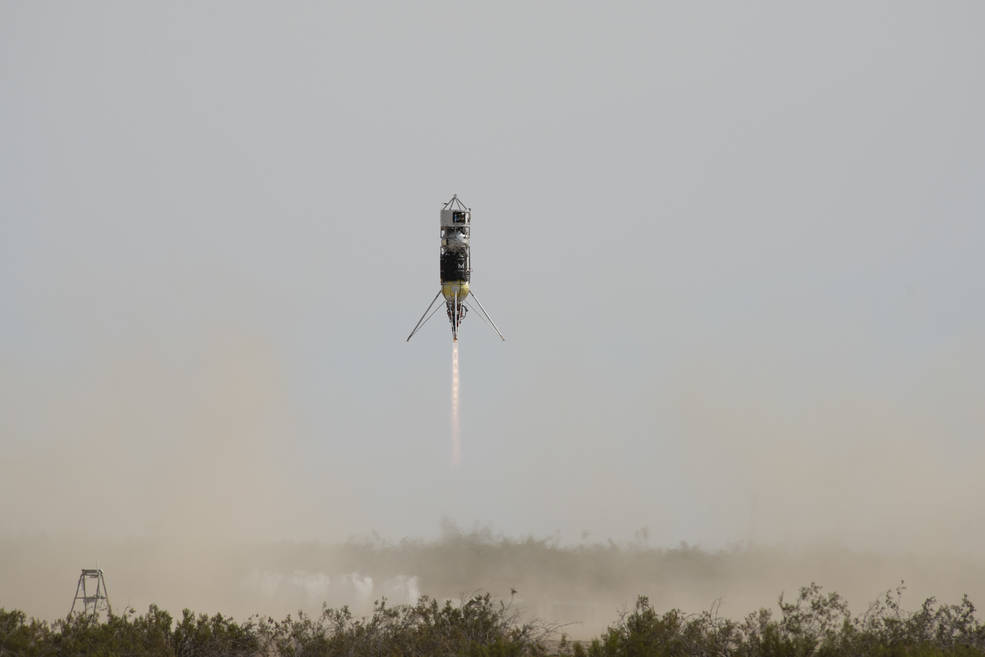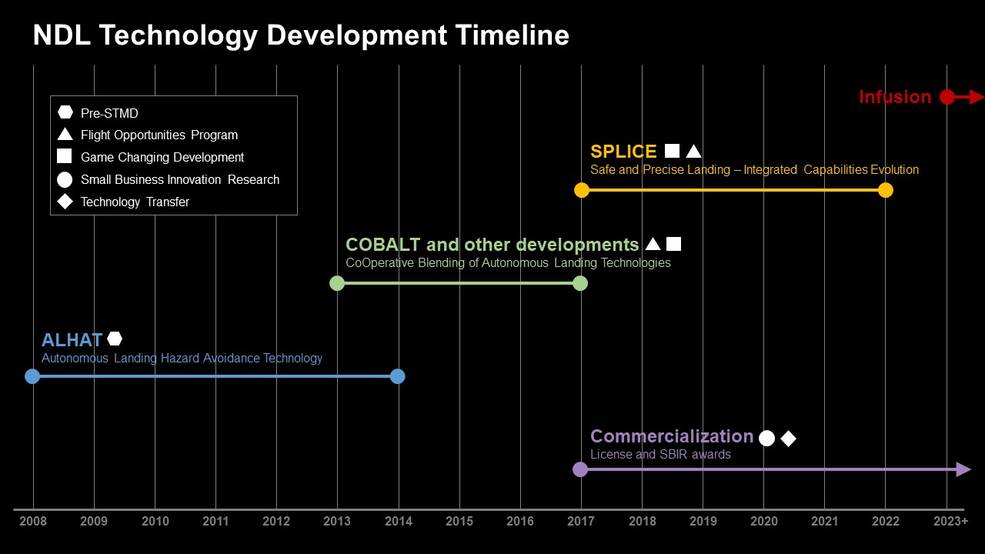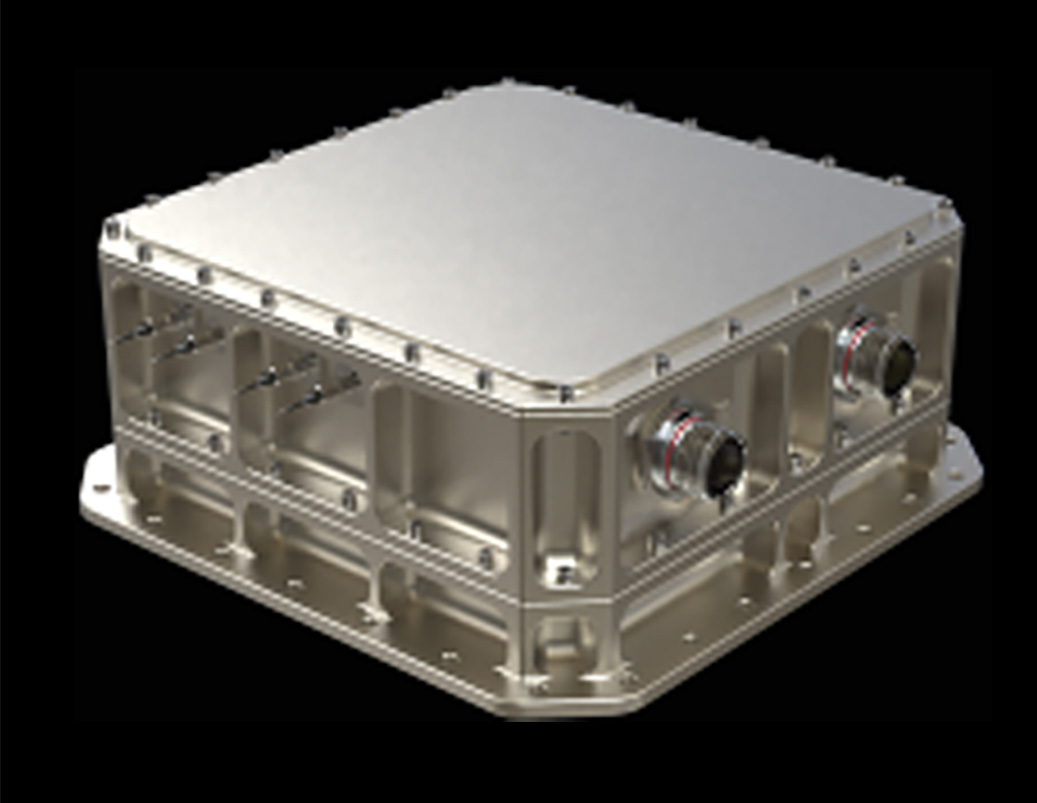NASA landing innovation helps commercial Moon, orbital missions
Two robotic Moon landers developed by Astrobotic Technology and Intuitive Machines will carry a navigation capability nurtured by NASA’s Space Technology Mission Directorate (STMD) as they descend to the Moon’s surface during their inaugural flights carrying payloads for NASA’s Commercial Lunar Payload Services (CLPS) initiative.
The Navigation Doppler Lidar (NDL) will provide precise altitude, speed, and direction to the guidance, navigation, and control (GNC) subsystem that enables Astrobotic’s Peregrine lander to land safely on the lunar surface. Intuitive Machines’ Nova-C lander also will carry an NDL payload as a backup to its primary navigation systems.
Originally developed at NASA’s Langley Research Center in Hampton, Virginia, NDL uses a laser to measure altitude to within a few feet and relies on the Doppler effect – frequency changes to radiated energy that occur as the source moves – to determine direction and speed to within a few centimeters per second, or less than one-tenth of a mile per hour. NASA planetary landers, including the Curiosity rover, traditionally have relied on radar, using radio waves, for this function, but NDL technology is more accurate and weighs far less, a major benefit for cost and space savings on planetary missions.
“NDL offers several critical advantages compared to radar, including significantly higher precision with reduced size, weight, and power,” said Farzin Amzajerdian, senior scientist at NASA Langley and NDL principal investigator. Radars have a relatively wide propagation pattern that is subject to distortion, whereas higher-frequency lasers emit pencil beams that are more precise, he said.
The enhanced accuracy will give NASA the flexibility to place landers in the most geologically interesting places on a planet or world, which often feature hazardous terrain. With less accurate systems, mission planners must be more conservative in choosing a landing site.
Using lasers for distance determination is not new: The Apollo astronauts used lasers to measure the distance to the Moon surface with about a meter accuracy. This technology has advanced by leaps and bounds since 1969.
Amzajerdian began working on the NDL technology at Langley around 2006, and eventually got a boost from NASA’s Autonomous Landing Hazard Avoidance Technology (ALHAT) project. That effort culminated in a flight demonstration of a second-generation prototype aboard NASA’s Morpheus lander testbed at NASA’s Kennedy Space Center in Florida in 2014.
STMD began investing in NDL in 2013 through a series of flight demonstrations, leading to the Cooperative Blending of Autonomous Landing Technologies (COBALT) project. Under COBALT, Langley developed a third generation NDL – 60% smaller, with three times the speed and greater range of the previous model – that flew a suborbital demonstration aboard the Xodiac vehicle provided by Masten Space Systems, now part of Astrobotic.
STMD further matured this technology as part of the Safe and Precise Landing – Integrated Capabilities Evolution (SPLICE) project, which seeks to develop and demonstrate complementary systems that can further enhance the capabilities of future landing vehicles.
Through the agency’s Technology Transfer program, NASA exclusively licensed NDL to Hampton-based Psionic, which has infused the technology into various space and terrestrial applications. Psionic has continued to develop the technology with multiple awards from the NASA Small Business Innovation Research & Small Business Technology Transfer (SBIR/STTR) program, utilizing NASA SBIR/STTR funding to deliver a more compact and energy-efficient system that can be used in a wider variety of vehicles and mission types.
Psionic has created its own commercial product called Psionic Space Navigation Doppler Lidar (PSNDL) and is building PSNDLs for use in docking operations and autonomous ground and aerial vehicles, with potential government applications. Near-term space-based applications of the Psionic system also include the docking mechanism on Axiom Space’s planned commercial space station, as well as potential lunar applications.
“NDL can potentially reduce overall cost and risk of landing missions and enable new capabilities for planetary exploration missions, including to the Moon, Mars, asteroids, and more,” Amzajerdian said.
NDL was NASA’s commercial Invention of the Year in 2022. Four STMD programs contributed to NDL’s development: Flight Opportunities, Technology Transfer, Small Business Innovation Research & Small Business Technology Transfer, and Game Changing Development.
Contact Swati Patel to share how NASA’s Space Technology Mission Directorate has supported your technology!



































